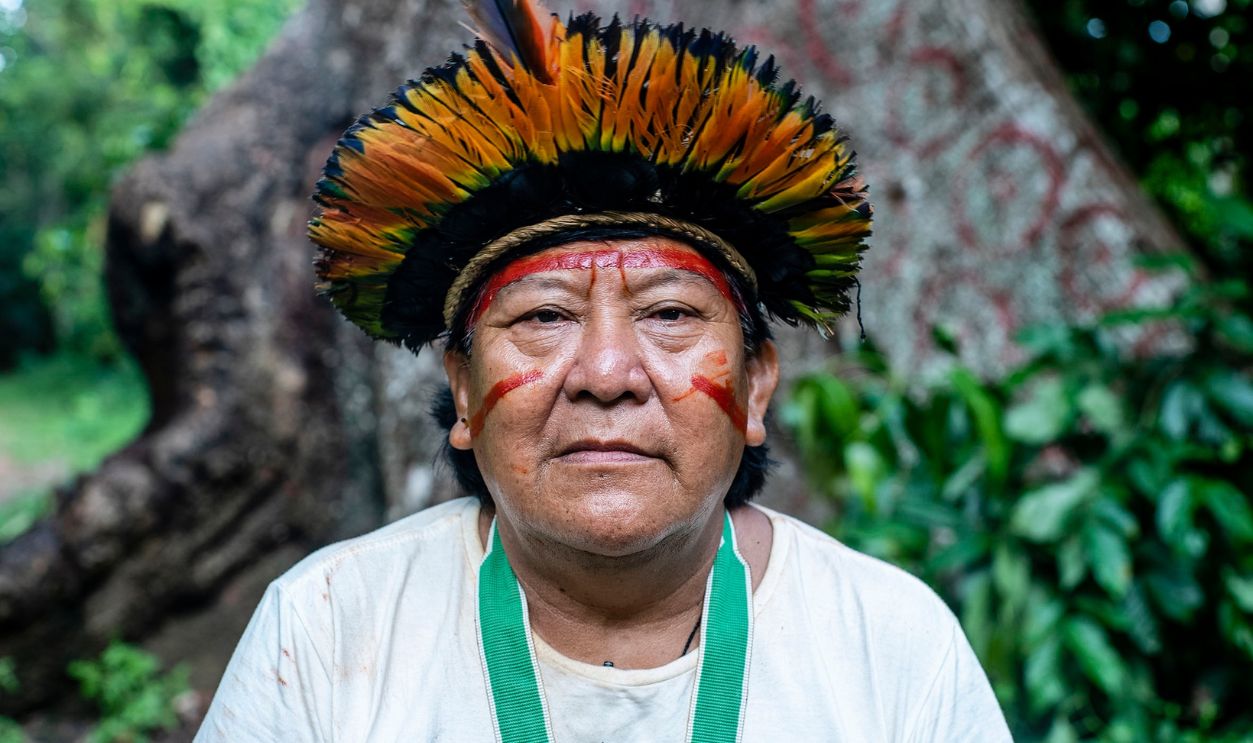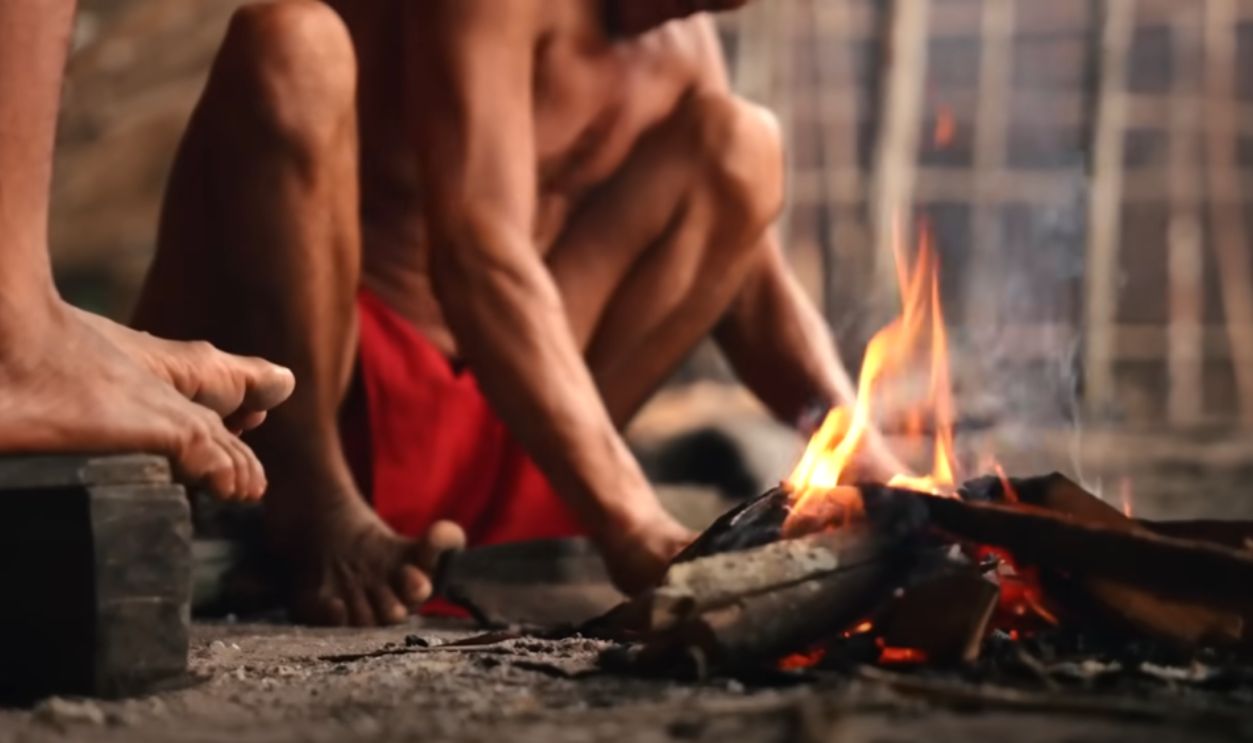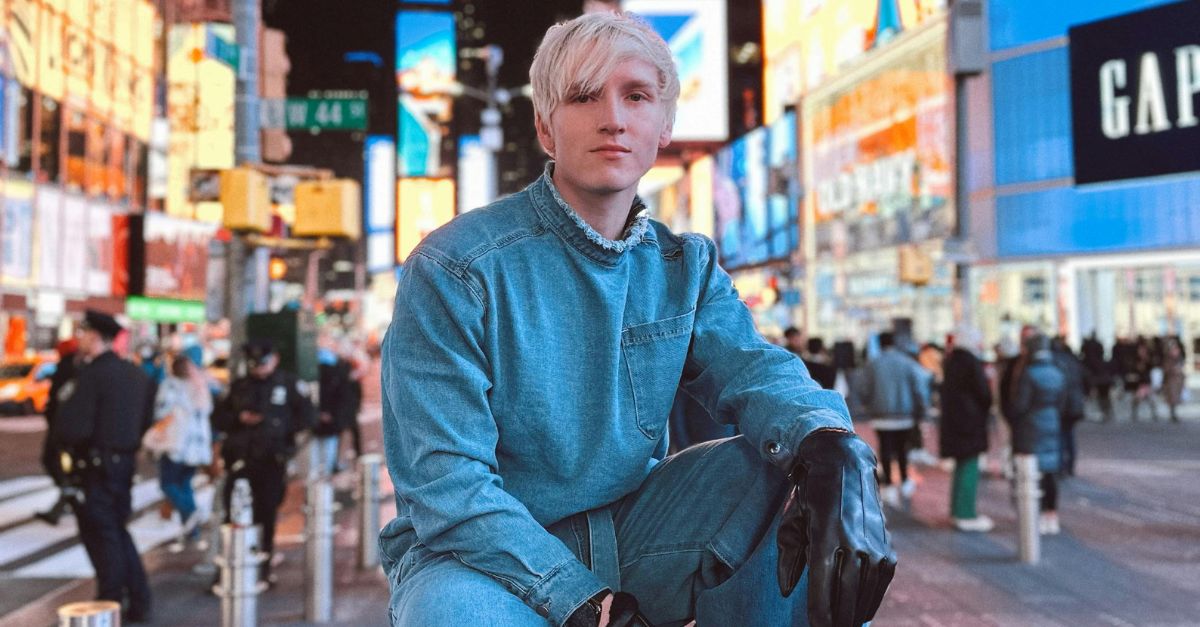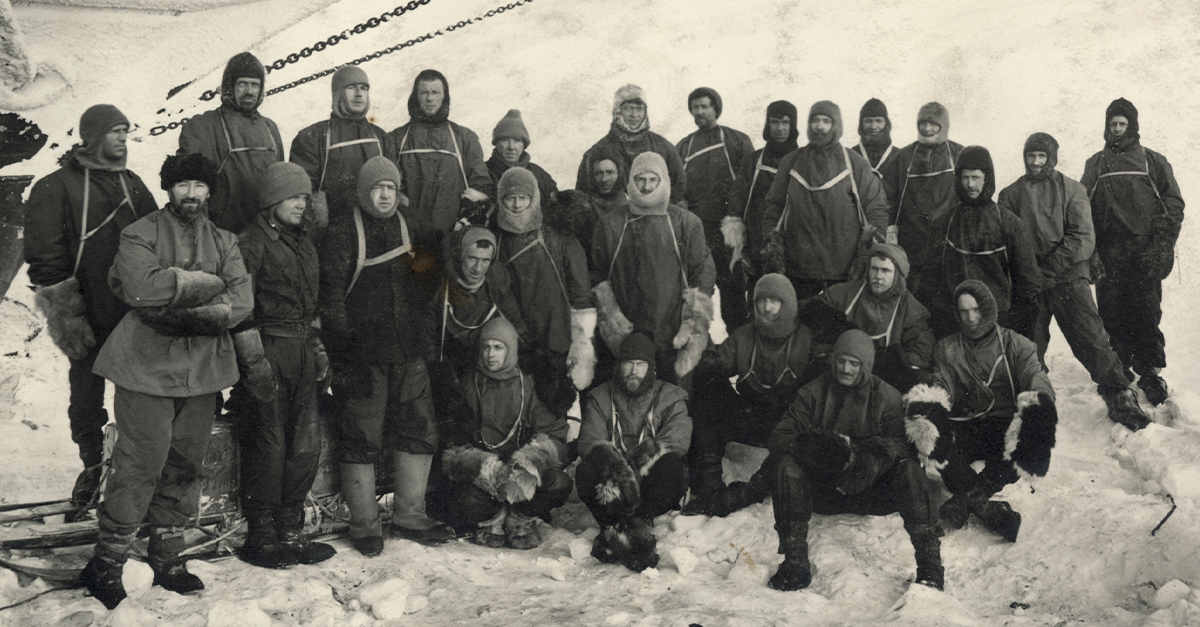Timeless Traditions Under A Lens
In the heart of emerald shadows where modernity fears to tread, we are the children of ancient wisdom, rooted in ancient wisdom and deep respect for the natural world. We paint our stories on forest winds and speak with spirits of the land—who are we? The answer is the Yanomami people.

The Yanomami, How Do They Look?
When you take a hike into the heart of the Amazon, you might just stumble upon a weird community and here is how they look: Brown skin, dark hair, and some interesting wooden adornment protruding on their chins. Some have markings on their faces and their clothing is just fabric.
 Cmacauley, CC BY-SA 3.0, Wikimedia Commons
Cmacauley, CC BY-SA 3.0, Wikimedia Commons
Expressions Of Spiritual Beliefs
Their art—intricate body paint, feathered headdresses, and ceremonial masks —reflects spiritual connection and symbolizes their heritage. The men here are the heads and women handle all the childbearing and home caring duties. They have village elders, but not one person over the entire community.
 Ambar, , CC BY-SA 3.0, Wikimedia Commons
Ambar, , CC BY-SA 3.0, Wikimedia Commons
The Origins Of The Yanomami People
The Yanomami's presence in the Amazon spans thousands of years, with significant documentation beginning in the mid-20th century. Ethnologist Jacques Lizot documented that the term 'Yanomami' translates to 'human beings', reflecting how these people self-identified.
 Margarita Cadenas - photographe, CC BY-SA 4.0, Wikimedia Commons
Margarita Cadenas - photographe, CC BY-SA 4.0, Wikimedia Commons
The Name Variants Of The Yanomami
You’ll find the Yanomami people carrying various names across different regions. The first one, the “Yanomami”, is their primary self-designation. Communities south of the Orinoco River refer to this. They are called the “Yanomawi” by those living to the north. The list goes on.
 Fábio Rodrigues Pozzebom, CC BY 3.0, Wikimedia Commons
Fábio Rodrigues Pozzebom, CC BY 3.0, Wikimedia Commons
More Names
You’ll also find other names like the Waika, Guiaca, Shiriana, Shirishana, Guaharibo, Yanoama, Ninam, and Xamatari. There is also a distinct subgroup within the community called Sanumá. This group has been notably influenced by their Ye’kuana neighbors, who speak their own dialect.
 GOING TO WAR with the Yanomami Tribe by Fearless & Far
GOING TO WAR with the Yanomami Tribe by Fearless & Far
All The Yanomami Languages
There are several dialects in the Yanomami language. In fact, one Yanomami dweller from one village might not even understand what another from another village is saying. Yup, that is how different these dialects are. The Yanomami speak several dialects, including Sanumá, Ninam, Waiká, and Yanomamö.
 Listen to the Yanomami, Lula (English subtitles) by SUMAÚMA Jornalismo
Listen to the Yanomami, Lula (English subtitles) by SUMAÚMA Jornalismo
Where They Settled
By looking through their oral traditions, historians suggest they are a river-based community with early settlements near the Orinoco River basin; a notable spot is the Padamo River. Historical records of early Spanish expeditions to the Amazon mention encounters with indigenous groups, but specifics about the Yanomami are uncertain.
 Fev, CC BY-SA 2.5, Wikimedia Commons
Fev, CC BY-SA 2.5, Wikimedia Commons
The Yanomami’s Love For Oral Storytelling
Storytelling has always being the way generations passed on information. And the Yanomami culture wasn’t the exception. Here, the elders pass down history, myths, and values through animated tales. These stories feature legendary heroes and cautionary figures, to teach about morality in a subtle, relatable, and fun way.
 GOING TO WAR with the Yanomami Tribe by Fearless & Far
GOING TO WAR with the Yanomami Tribe by Fearless & Far
The Yanomami’s Unique Relationship With Animals
Since they lived in the Amazon, it's inevitable that they had connections with the fauna there. Jaguars, for instance, were their powerful spirits. Meanwhile, monkeys and tapirs were food. Monkeys were also used in their mythology, body adornment, and technology.
 Charles J. Sharp, CC BY-SA 4.0, Wikimedia Commons
Charles J. Sharp, CC BY-SA 4.0, Wikimedia Commons
How The Yanomami Moved Through The Vast Amazon Rainforest
You have to wonder how anyone would move through a dense forest with nothing on but cotton fabric, right? Well, the Yanomami did it with unmatched expertise. They traversed dense jungles using rivers as natural highways. Similar to today, they also used landmarks (unique trees or rock formations.)
 Jorge.kike.medina, CC BY 3.0, Wikimedia Commons
Jorge.kike.medina, CC BY 3.0, Wikimedia Commons
They Were The Resilient Tribe
Its estimated that between 1630 to 1720, all other river-based communities became extinct. Why? Slave-hunting expeditions which had most community members taken—families separated and communities broken down to almost oblivion. The hunters were mostly the conquistadors (Spaniard explorers) and bandeirantes (independent gold miners).
 Henrique Bernardelli, Wikimedia Commons
Henrique Bernardelli, Wikimedia Commons
How Did They Survive?
It’s unknown how they did it, but what history has is that they managed to stay under the radar, away from the outside world. This all came to an end sometime in the 1950s when New Tribes Missions and Catholic missionaries decided to interact with them.
 GOING TO WAR with the Yanomami Tribe by Fearless & Far
GOING TO WAR with the Yanomami Tribe by Fearless & Far
A Glimpse Into The Living Arrangement
Now, back to how they lived. They stayed in villages, or “shabonos”. These are architectural masterpieces made of leaves, tree trunks, and vines. They were circular or oval-shaped structures with an open roof in the middle. Think of a bowl with a hole in the middle and turned upside down.
 Kuliw, CC BY-SA 4.0, Wikimedia Commons
Kuliw, CC BY-SA 4.0, Wikimedia Commons
Not Water, Wind, Or Insect Resistant
Sadly, their shabonos were far from what we have today. Sure, they could withstand a little rain, but when the Amazon rain pours cats and dogs, the village would need reconstruction. The wind and insects also had free entrance. For these reasons, reconstruction had to be done every 4-6 years.
 Cmacauley, CC BY-SA 4.0, Wikimedia Commons
Cmacauley, CC BY-SA 4.0, Wikimedia Commons
What About Privacy?
Imagine living under the same roof with 400 people, what about privacy? Well, this “dome-like” structure had support posts that divided the space into homes enough to house a unit. So, relax, your distant cousin could only see you when you were out of the designated space.
 GOING TO WAR with the Yanomami Tribe by Fearless & Far
GOING TO WAR with the Yanomami Tribe by Fearless & Far
How Yanomami Children Learn Survival Skills Early
It was custom that the young learn from an early age. This meant that the children learnt to fish, hunt, and identify plants as young as they could speak. They would also play doubles as practice and this would teach them life’s essentials seamlessly.
 GOING TO WAR with the Yanomami Tribe by Fearless & Far
GOING TO WAR with the Yanomami Tribe by Fearless & Far
Unique Yanomami Marriage Customs
Now, let’s talk Love. Marriage often served as a strategic alliance between families, with men spending time living with and assisting their in-laws as part of the union. When a partner departs, the surviving partner may marry their departed spouse’s sibling.
 Planalto Palace from Brasilia, Brazil, CC BY 2.0, Wikimedia Commons
Planalto Palace from Brasilia, Brazil, CC BY 2.0, Wikimedia Commons
More Marriage Customs
Even though monogamy was prevalent, polygyny was also common among headmen and successful hunters. Here, one man had several wives. The home arrangement was also unique. Each wife had her own family unit set aside where she stayed with her kids. Life here was centered around this small unit.
 Sam valadi, CC BY 2.0, Wikimedia Commons
Sam valadi, CC BY 2.0, Wikimedia Commons
One Roof, One People
The Yanomami follow an Iroquois-style kinship system where everyone is considered a blood relative. Kin groups live together in villages, forming close-knit communities. Though genealogical connections may be relatively recent, the bonds between groups who exchange marriage partners become exceptionally strong and socially significant.
 GOING TO WAR with the Yanomami Tribe by Fearless & Far
GOING TO WAR with the Yanomami Tribe by Fearless & Far
Food
These people had it all—meat and veggies—because they were fishers, horticulturists, and hunters. Women would cultivate and cook and the men would do the dirty work: the clearing and digging the land. Their diet consisted of plantains, cassava, and grubs. It might seem like a balanced diet, but….
 GOING TO WAR with the Yanomami Tribe by Fearless & Far
GOING TO WAR with the Yanomami Tribe by Fearless & Far
It Was Low In Sodium
Sodium, also edible salt was quite low. So much so that this group had recorded the lowest blood pressure among the people living around them. For this reason, they have become a focus group in studies linking hypertension to sodium intake. Google it, you’ll find studies dating back to 1975.
 GOING TO WAR with the Yanomami Tribe by Fearless & Far
GOING TO WAR with the Yanomami Tribe by Fearless & Far
The Yanomami’s Ingenious Agricultural Practices
Their farming style was simple: Slash-and-burn and labor-intensive to renew the soil’s fertility. This way, they ensured that all the plants they cultivated always gave good produce. Was it the best method? No. But it did work for them.
 How Indigenous farming practices help the soil by Sci NC
How Indigenous farming practices help the soil by Sci NC
Yanomami Bird-Hunting Techniques
We did mention that these people were hunters, right? Well one of their chosen hunt was birds and boy, isn’t this a sport for the patient. Bird hunting requires stealth and skill so, they used blowguns with astonishing precision. The hunters would mimic bird calls to lure prey.
 GOING TO WAR with the Yanomami Tribe by Fearless & Far
GOING TO WAR with the Yanomami Tribe by Fearless & Far
The Yanomami Tattoos
What you see on their faces and bodies were not just body paint but sometimes tatoos. These were often plant-based dyes that symbolized different things—life events or spiritual protection. They were in different forms of lines, dots, and shapes.
 Ludwig Winklhofer, CC BY-SA 2.0, Wikimedia Commons
Ludwig Winklhofer, CC BY-SA 2.0, Wikimedia Commons
Traditional Yanomami Jewelry
The Yanomami adorned themselves with pieces crafted from seeds, teeth, and bones. The necklaces might represent familial bonds, while earrings denote courage. The sticks hanging from their chins and sometimes noses were also ceremonial. Everything was handmade without modern tools.
 Cmacauley, CC BY-SA 3.0, Wikimedia Commons
Cmacauley, CC BY-SA 3.0, Wikimedia Commons
Rituals That Led The Pack
This tribe had its fair share of rituals where they would celebrate a big harvest, and many other celebrations. But, their most notable ritual had to be the ones where the Shamans use “ebene” during rituals to connect with spirits, seeking guidance for healing and other communal needs.
 Listen to the Yanomami, Lula (English subtitles) by SUMAÚMA Jornalismo
Listen to the Yanomami, Lula (English subtitles) by SUMAÚMA Jornalismo
Where The “Yakoana” Or “Ebene” Came From
The “Yakoana” came from the Virola elongata tree. The ebene was a mix of the powdered bark of the same tree with “Yopo”, another derivative from Anadenanthera peregrina. They believed that this drug helped them communicate with the spirits overseeing the physical world called the “Hekura” during the “Shapura”.
 GOING TO WAR with the Yanomami Tribe by Fearless & Far
GOING TO WAR with the Yanomami Tribe by Fearless & Far
When Girls Became Women
When a girl hit 13 and started her menses, the tribe considered her a woman, and now she could be married off. She might have already been betrothed, but the marriage was only consummate after her menses began. Do they really stick to this? Not always.
 GOING TO WAR with the Yanomami Tribe by Fearless & Far
GOING TO WAR with the Yanomami Tribe by Fearless & Far
You Hide Your Treasures, Right?
The Yanomami called menstruation “roo”. This word in English meant “squatting” because the girls never used any absorbent material for the blood. And since they believed menstrual blood was poisonous, the girls were kept in hidden spaces where they were to “squat” over a deep hole.
 GOING TO WAR with the Yanomami Tribe by Fearless & Far
GOING TO WAR with the Yanomami Tribe by Fearless & Far
When Menstruation Started, Everybody Knew
If you thought its a secret, it isn’t. The new woman receives new clothing showing that she is now ready for marriage. During her hidden week, she is fed by a stick, she has to whisper to speak, and she only talks to her closest kin. No males please.
 GOING TO WAR with the Yanomami Tribe by Fearless & Far
GOING TO WAR with the Yanomami Tribe by Fearless & Far
Bleeding But Not So Often
The irony is that after a girl’s first menis and marriage, she rarely sees her period. Why? She is either pregnant or breastfeeding. In essence, the community just needed a sign you were ready for childbearing, and from then on, it's one child after the other.
 GOING TO WAR with the Yanomami Tribe by Fearless & Far
GOING TO WAR with the Yanomami Tribe by Fearless & Far
More Ritualistic Ceremonies And Their Deeper Meanings
Ceremonies in this community are a big deal, from births to deaths. One particularly striking example is the “reahu”. Here, the bones of the departed are crushed and consumed to honor their spirits. Shocking, isn’t it? Yet, this act represents closure.
 GOING TO WAR with the Yanomami Tribe by Fearless & Far
GOING TO WAR with the Yanomami Tribe by Fearless & Far
A Look At Inter-Tribal Conflicts
Conflicts here were not so rare. The weird part is that they would fly off the handle towards each other, too. Anthropologist Napoleon Chagnon described frequent conflicts among the Yanomami, a view that has been debated among scholars. They fought for food, weapons, land, among other things.
 Ludwig Winklhofer, CC BY-SA 2.0, Wikimedia Commons
Ludwig Winklhofer, CC BY-SA 2.0, Wikimedia Commons
These Conflicts Sometimes Went A Bit Too Far
In some cases, these fights were so bad people would lose everything. Here, we are talking about the conflicts that ensued between villages and outsiders. It got really bad that in 2021, Michelle Bachelet included in her report to the UN that the recent attacks of the Yanomami was alarming.
 Alex Proimos from Sydney, Australia, CC BY 2.0, Wikimedia Commons
Alex Proimos from Sydney, Australia, CC BY 2.0, Wikimedia Commons
The Main Attackers?
The main attackers were shady miners who were slowly taking over the Amazon. This new piece of info, about miners, dates all the way back to the 1970s when gold was discovered within the Yanomami territory. As expected, a gold rush invited uninvited guests.
 Wikiusuarie, CC BY-SA 4.0, Wikimedia Commons
Wikiusuarie, CC BY-SA 4.0, Wikimedia Commons
Uninvited Guests Bringing Unwanted Gifts
When the miners got here, they came with diseases and introduced certain vices within the community—alcoholism and violence. The gold miners came in and forcefully wanted to take over the land. So, they were wiping out the Yanonami people to get it. The mining techniques they were using weren’t “living-friendly”.
 The Yanomami people are contaminated by mercury used in gold digging by Instituto Socioambiental
The Yanomami people are contaminated by mercury used in gold digging by Instituto Socioambiental
The Disturbance Was Just Getting Started
During the 1970s, Brazil’s military government also launched development projects in Yanomami territory. They were building roads and encouraging colonization. By 1987, a massive gold rush brought 40,000 miners to their lands—five times the indigenous population—leading to widespread conflicts, health crises, and social disruption.
 James Martins, CC BY 3.0, Wikimedia Commons
James Martins, CC BY 3.0, Wikimedia Commons
The Fight For Protection (1978-1992)
In response to increasing threats, the Pro-Yanomami Commission (CCPY) launched a campaign in 1978 to protect Yanomami's rights. Their 13-year effort succeeded in 1992 when Brazil officially designated 96,650 square kilometers as protected Yanomami territory across the Roraima and Amazonas states.
 Palácio do Planalto from Brasilia, Brasil, CC BY 2.0, Wikimedia Commons
Palácio do Planalto from Brasilia, Brasil, CC BY 2.0, Wikimedia Commons
More Controversies
There were also cases where scientists kept blood for future studies, but the Yanomami traditions didn’t allow this. Finally, the samples were taken back and buried. Next was a fabrication of history in Patrick Tierney’s book Darkness in El Dorado. There was clear misconduct in the scientific study of the people.
 Solem josias, CC BY-SA 3.0, Wikimedia Commons
Solem josias, CC BY-SA 3.0, Wikimedia Commons
The Mining?
First, it was unlawful. Second, it left scars that the Yanomamui people still feel today. Just recently in a 2023 report, its clear that the mercury from the mining sites made its way into the water sources that fed the Yanomami. The results? Malnutrition and elevated disease reports, including malaria.
 GOING TO WAR with the Yanomami Tribe by Fearless & Far
GOING TO WAR with the Yanomami Tribe by Fearless & Far
How Yanomami Handled Inter-Community Conflict
We’ve seen how outside conflict were handled, but internally, the disputes were settled through dialogue and symbolic contests. These were activities like wrestling or song duels and the best man/woman wins fair and square. These non-lethal methods ensure harmony without prolonged animosity.
 Palácio do Planalto from Brasilia, Brasil, CC BY 2.0, Wikimedia Commons
Palácio do Planalto from Brasilia, Brasil, CC BY 2.0, Wikimedia Commons
The Yanomami Has Been Shrinking
Imagine this: You are fighting against many demons, less food, conflicts, malaria, and mercury poisoning. Do you think you would survive? Oh, barely. So this led to the decline of the entire Yanomami population in just three years (1987 to 1990). The Yanonami had no one on their side.
 GOING TO WAR with the Yanomami Tribe by Fearless & Far
GOING TO WAR with the Yanomami Tribe by Fearless & Far
No Protection Whatsoever
The Fundação Nacional dos Povos Indígenas (FUNAI) is the Brazilian organization that protects local cultures, and the government never protected them. The FUNAI president actually denied the deaths were because of the miner’s invasion. The president was for “economic growth”. Later on, Brazil was charged with genocide.
 Túllio F, CC BY-SA 4.0, Wikimedia Commons
Túllio F, CC BY-SA 4.0, Wikimedia Commons
How Yanomami Traditions Shape Modern Anthropology
Anthropologists consider the Yanomami a cultural goldmine. Their unique customs provide insights into human evolution and societal development. And so many scientists and researchers dipped their fit into exploring them. Unfortunately, some left them worse than they were, and others simply took advantage of the nativity.
 GOING TO WAR with the Yanomami Tribe by Fearless & Far
GOING TO WAR with the Yanomami Tribe by Fearless & Far







